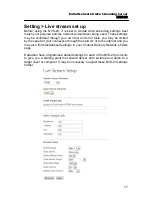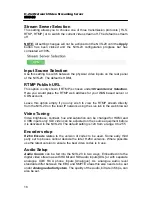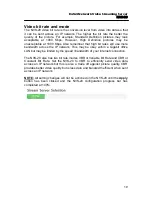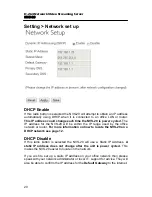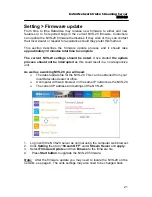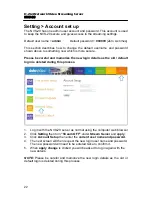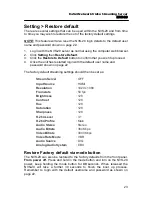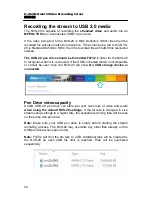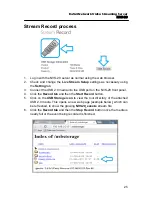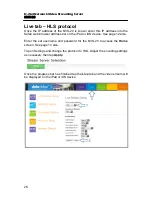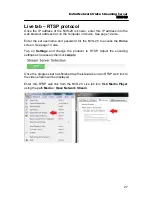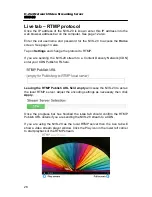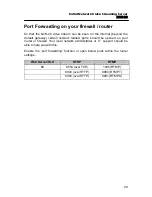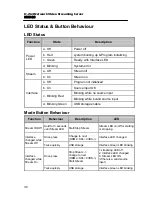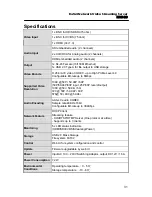
H.264 Network Video Streaming Server
NVS-20
Setting > Live stream set up - Protocols
Before using the NVS-20, it is best to decide what streaming protocol best
suits your purpose.
HLS protocol
Use the NVS-20 to provide an IP video stream to several
apple based clients
or tablet computers such as an iPad, iPhone or Mac Book running the Safari
browser. HLS carries both video and audio to the iOS device.
Note that HLS
latency may be up to 10 seconds behind live events depending on the
settings used.
RTSP protocol
Use the NVS-20 to provide an IP video stream [UDP] to a small group of
clients on a LAN or WAN. Video can be monitored via free client software
such as VLC Player.
RTSP does not work well with some tablet computers.
RTSP is open for viewing by anyone on the same network with the stream
details or link.
It can be sent across the internet, but each client added will
add data load to the NVS-20, as each video stream is set up individually.
RTSP may be limited to three viewing
clients before the NVS-20 becomes
choppy and video stream fails.
RTMP protocol
Use the NVS-20 to provide a single IP video stream [TCP] to a server on a
Wide Area Network [WAN] like the
internet
or to a small group of clients on a
private Local Area Network [LAN].
The server on the WAN could be the server of a
Content Delivery Network
[CDN], such as
Ustream,
LiveStream or Justin.tv
. To use a CDN you may
need to register for a free / trial account first and then some costs may be
involved at a later stage. You only provide one video stream to the CDN and
they share that IP video feed with multiple viewers. This means less work for
you and the NVS-20 too. CDNs differ in tariffs and the way they operate so
it
is best to do your own research beforehand.
The server on a WAN could also be your own
Wowza server
. Wowza servers
are a bespoke CDN solution, typically for large organisations, where you
brand the look and feel of the delivery network plus the video stream itself.
Again it is best to do your own research beforehand.
16
















